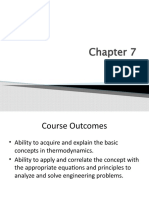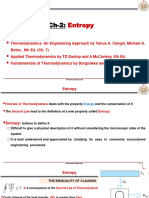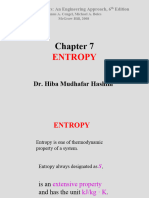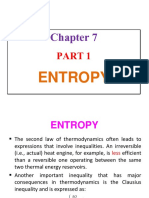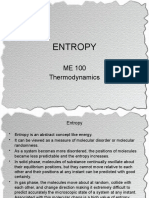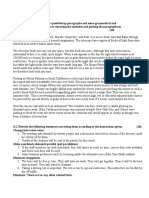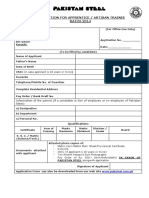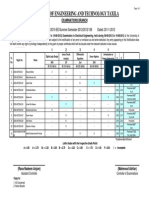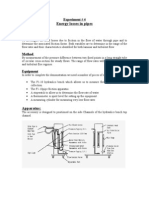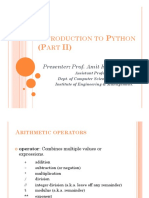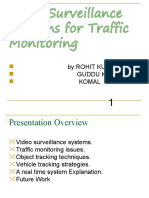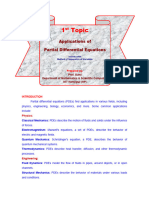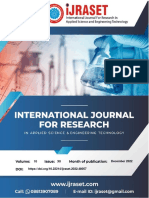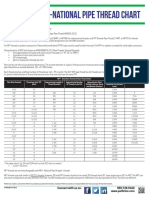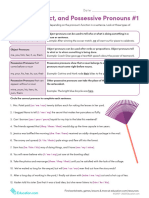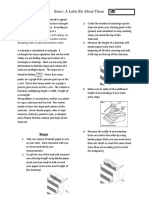Chapter 7 ENTROPY
Lecturer M.Salman Siddiqui
Air University, E-9, Islamabad.
�Objectives
Apply the second law of thermodynamics to processes. Define a new property called entropy to quantify the secondlaw effects.
Establish the increase of entropy principle.
Calculate the entropy changes that take place during processes for pure substances, incompressible substances, and ideal gases.
Examine a special class of idealized processes, called isentropic processes, and develop the property relations for these processes.
Derive the reversible steady-flow work relations.
Develop the isentropic efficiencies for various steady-flow devices.
Introduce and apply the entropy balance to various systems.
2
�ENTROPY
Clasius inequality
Formal definition of entropy
The system considered in the development of the Clausius inequality.
The equality in the Clausius inequality holds for totally or just internally reversible cycles and the inequality for the irreversible ones.
3
�A quantity whose cyclic integral is zero (i.e., a property like volume)
Entropy is an extensive property of a system.
The net change in volume (a property) during a cycle is always zero. A Special Case: Internally Reversible The entropy change between two specified states is the same whether the process is reversible or irreversible.
Isothermal Heat Transfer Processes
This equation is particularly useful for determining the entropy changes of thermal energy reservoirs.
4
�THE INCREASE OF ENTROPY PRINCIPLE
The equality holds for an internally reversible process and the inequality for an irreversible process.
A cycle composed of a reversible and an irreversible process. Some entropy is generated or created during an irreversible process, and this generation is due entirely to the presence of irreversibilities. The entropy generation Sgen is always a positive quantity or zero. Can the entropy of a system during a process decrease?
5
�The entropy change of an isolated system is the sum of the entropy changes of its components, and is never less than zero. A system and its surroundings form an isolated system. The increase of entropy principle
6
�Some Remarks about Entropy
1. Processes can occur in a certain direction only, not in any direction. A process must proceed in the direction that complies with the increase of entropy principle, that is, Sgen 0. A process that violates this principle is impossible. 2. Entropy is a nonconserved property, and there is no such thing as the conservation of entropy principle. Entropy is conserved during the idealized reversible processes only and increases during all actual processes. 3. The performance of engineering systems is degraded by the presence of irreversibilities, and entropy generation is a measure of the magnitudes of the irreversibilities during that process. It is also used to establish criteria for the performance of engineering devices.
7
The entropy change of a system can be negative, but the entropy generation cannot.
�ENTROPY CHANGE OF PURE SUBSTANCES
Entropy is a property, and thus the value of entropy of a system is fixed once the state of the system is fixed.
The entropy of a pure substance is determined from the tables (like other properties).
Entropy change
8
�Example
�ISENTROPIC PROCESSES
A process during which the entropy remains constant is called an isentropic process.
During an internally reversible, adiabatic (isentropic) process, the entropy remains constant.
The isentropic process appears as a vertical line segment on a T-s diagram.
10
�Example
11
�PROPERTY DIAGRAMS INVOLVING ENTROPY
On a T-S diagram, the area under the process curve represents the heat transfer for internally reversible processes. For adiabatic steady-flow devices, the vertical distance h on an h-s diagram is a measure of work, and the horizontal distance s is a measure of irreversibilities. Mollier diagram: The h-s diagram
12
�THE T ds RELATIONS
the first T ds, or Gibbs equation
The T ds relations are valid for both reversible and irreversible processes and for both closed and open systems.
the second T ds equation
Differential changes in entropy in terms of other properties
13
�ENTROPY CHANGE OF LIQUIDS AND SOLIDS
Liquids and solids can be approximated as incompressible substances since their specific volumes remain nearly constant during a process.
Since
for liquids and solids
For and isentropic process of an incompressible substance
14
�Example
15
�THE ENTROPY CHANGE OF IDEAL GASES
From the first T ds relation From the second T ds relation
16
�Constant Specific Heats (Approximate Analysis)
Entropy change of an ideal gas on a unitmole basis
Under the constant-specificheat assumption, the specific heat is assumed to be constant at some average value.
17
�Variable Specific Heats (Exact Analysis)
We choose absolute zero as the reference temperature and define a function s as
On a unitmass basis
On a unitmole basis
The entropy of an ideal gas depends on both T and P. The function s represents only the temperaturedependent part of entropy.
18
�Isentropic Processes of Ideal Gases
Constant Specific Heats (Approximate Analysis)
Setting this eq. equal to zero, we get
The isentropic relations of ideal gases are valid for the isentropic processes of ideal gases only.
19
�Isentropic Processes of Ideal Gases
Variable Specific Heats (Exact Analysis)
Relative Pressure and Relative Specific Volume
exp(s/R) is the relative pressure Pr. The use of Pr data for calculating the final temperature during an isentropic process.
T/Pr is the relative specific volume vr.
The use of vr data for calculating the final temperature during an isentropic process
20
�ISENTROPIC EFFICIENCIES OF STEADY-FLOW DEVICES
The isentropic process involves no irreversibilities and serves as the ideal process for adiabatic devices.
Isentropic Efficiency of Turbines
The h-s diagram for the actual and isentropic processes of an adiabatic turbine.
21
�Example
22
�Isentropic Efficiencies of Compressors and Pumps
When kinetic and potential energies are negligible
For a pump Isothermal efficiency The h-s diagram of the actual and isentropic processes of an adiabatic compressor. Compressors are sometimes intentionally cooled to minimize the work input.
23
�Example
24
�Isentropic Efficiency of Nozzles
If the inlet velocity of the fluid is small relative to the exit velocity, the The h-s diagram energy balance is of the actual and isentropic processes of an adiabatic nozzle. Then,
25





















